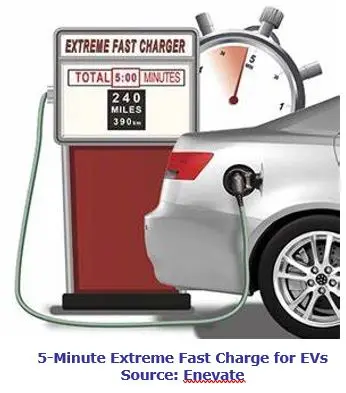

Extreme Fast Charging (XFC) technology is emerging as a transformative innovation in the electric vehicle (EV) landscape, holding the promise to mitigate the limitations of conventional charging solutions and redefine the paradigms of fleet operations. This technology is crucial for fleet operators aiming to optimize operational efficiency and embrace sustainable practices. However, the deployment of XFC chargers is fraught with its own set of challenges and obstacles that need meticulous attention and resolution. This article aims to provide a comprehensive overview of the significance of XFC technology, delve into the inherent challenges in its deployment, and explore its potential to reshape fleet management strategies and sustainability. The exploration of these aspects is pivotal for understanding the trajectory of XFC technology in the evolving electric mobility landscape.
The current EV charging ecosystem is characterized by a plethora of charging solutions, each tailored to meet distinct needs and operational prerequisites. However, conventional charging solutions, with their extended charging times and restricted range, have been substantial impediments to the seamless integration and adoption of EVs in fleet operations. In this diverse and complex ecosystem, XFC technology stands out, capable of delivering up to 350 kilowatts (kW) of power, significantly reducing charging times and enhancing the operational efficiency of fleets. The advent of XFC technology is perceived as a revolutionary development, promising to address the longstanding challenges associated with EV charging. The integration of XFC is seen as a beacon of hope for fleet operators striving for enhanced operational efficacy and sustainability.
While XFC technology is revolutionary, deploying XFC chargers is accompanied by numerous challenges. The requirement for high power levels necessitates extensive upgrades to the existing electrical infrastructure, leading to increased costs and logistical complexities. The substantial heat generated during the high-power charging process poses risks of battery degradation, necessitating the development of innovative cooling solutions to maintain optimal battery health and performance. The formulation and implementation of comprehensive safety standards and interoperable solutions are imperative to ensure the seamless and safe operation of XFC chargers across varied equipment and software providers. Addressing these challenges is crucial for the successful integration and utilization of XFC technology in fleet operations.
To harness the full potential of XFC technology, it is essential to address and overcome the challenges associated with its deployment. Strategic planning, coupled with substantial investment in infrastructure upgrades, is vital to accommodate the high-power requirements of XFC chargers. The development and integration of advanced cooling technologies are paramount to counteract the risks of battery degradation during high-power charging sessions. The establishment of standardized and interoperable solutions will facilitate the seamless integration of XFC chargers with diverse equipment and software, ensuring compatibility, safety, and operational efficiency. Additionally, leveraging available incentives and subsidies can significantly offset the costs associated with the deployment and operation of XFC chargers, making it a viable option for fleet operators.
The future trajectory of XFC technology in fleet operations is laden with promise and potential. The ongoing advancements in XFC technology are poised to surmount the existing deployment challenges and propel the evolution of the EV charging ecosystem to  new heights. The synergistic integration of XFC technology with renewable energy sources and smart grid technologies is anticipated to significantly enhance the sustainability and efficiency of fleet operations. The continuous innovations and developments in the field are expected to foster industry growth and pave the way for the advent of more sophisticated and efficient charging solutions. This progressive trajectory of XFC technology is enabling fleet operators to aspire for operational excellence and environmental sustainability, shaping the future landscape of electric mobility.
new heights. The synergistic integration of XFC technology with renewable energy sources and smart grid technologies is anticipated to significantly enhance the sustainability and efficiency of fleet operations. The continuous innovations and developments in the field are expected to foster industry growth and pave the way for the advent of more sophisticated and efficient charging solutions. This progressive trajectory of XFC technology is enabling fleet operators to aspire for operational excellence and environmental sustainability, shaping the future landscape of electric mobility.
Extreme Fast Charging (XFC) technology is positioned as a groundbreaking innovation with the transformative potential to reshape the contours of fleet operations and contribute to a more sustainable and eco-friendly future. The deployment of XFC chargers, albeit challenging, is a step forward in realizing the vision of efficient and sustainable fleet management. The strategic approaches and innovations in XFC technology are instrumental in navigating and overcoming the deployment challenges, paving the way for a new era in electric mobility. The integration of XFC technology is a convergence of operational efficiency and environmental responsibility, offering a visionary perspective into the future of fleet management. The exploration and understanding of the significance, challenges, and future implications of XFC technology are crucial for stakeholders and fleet operators aiming to be at the forefront of the electric mobility revolution.

